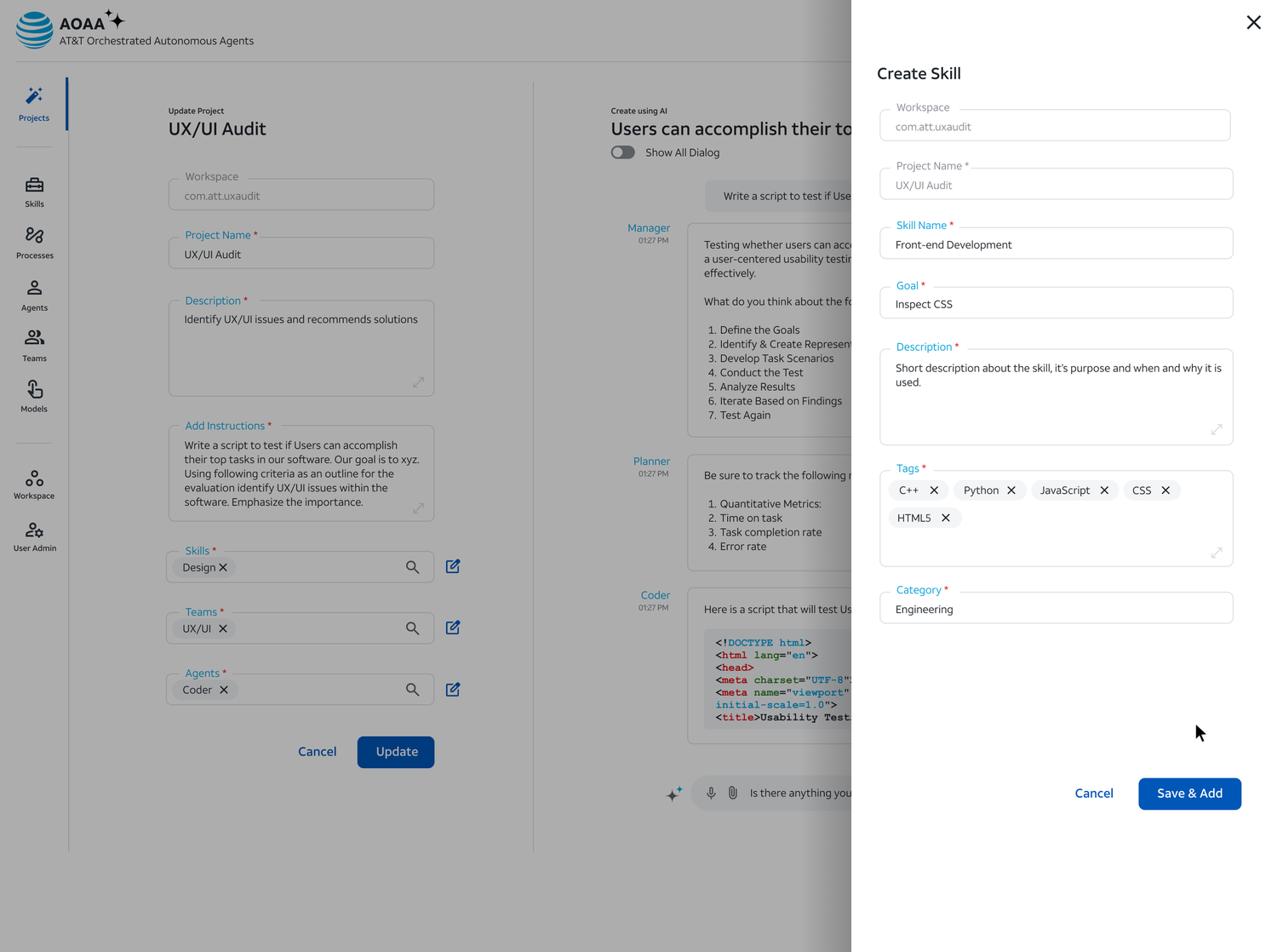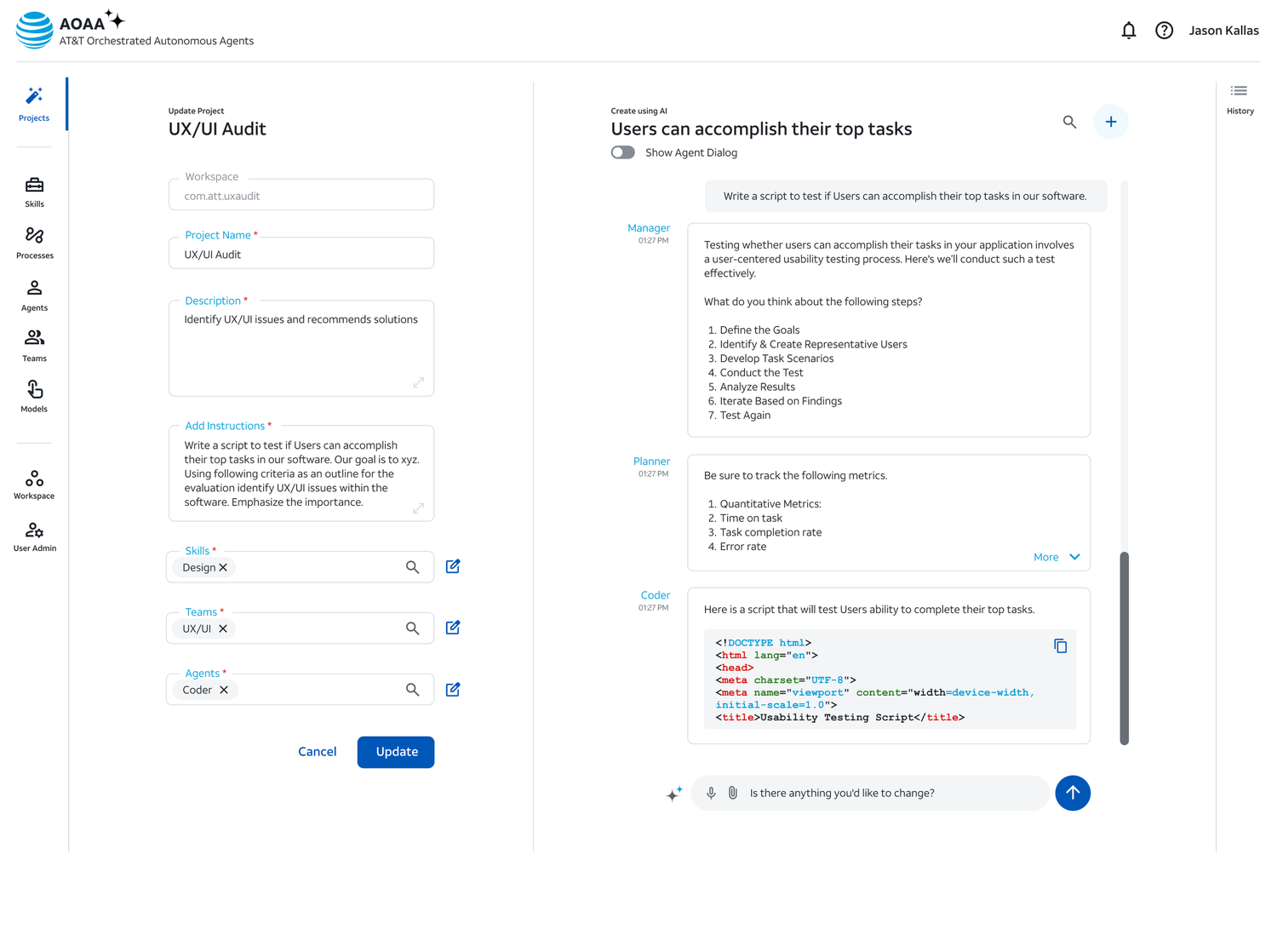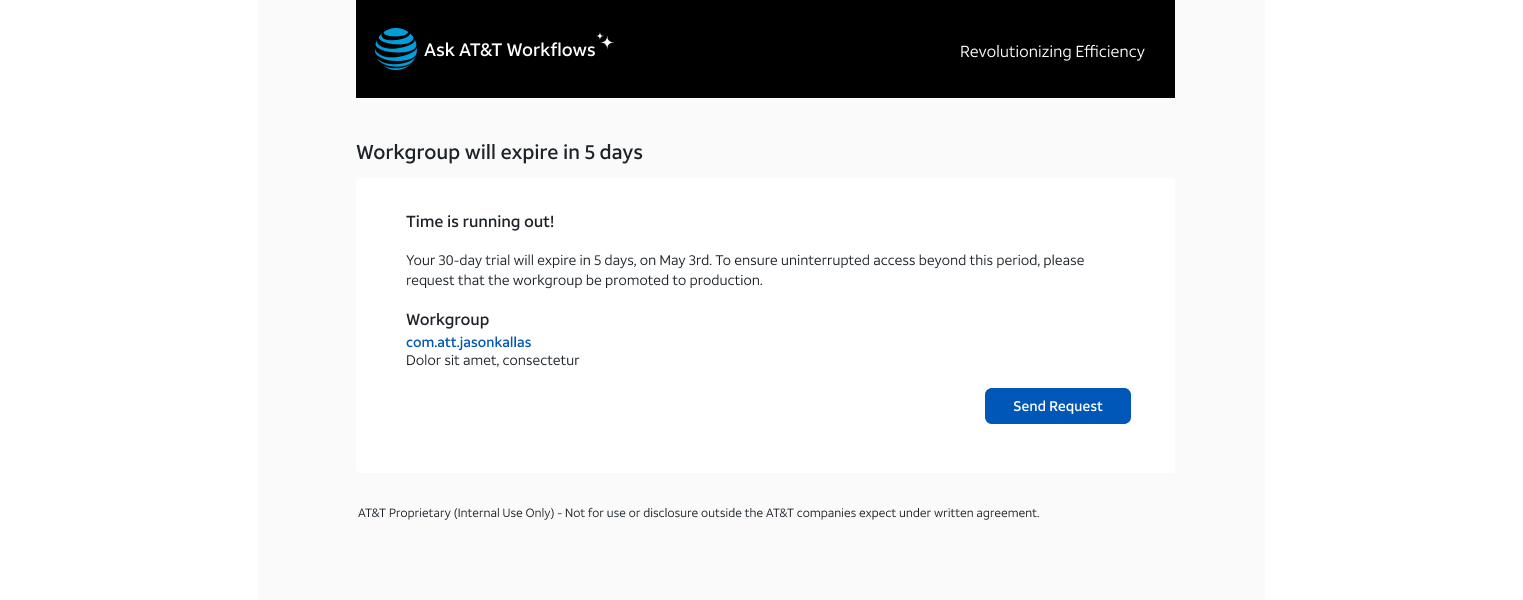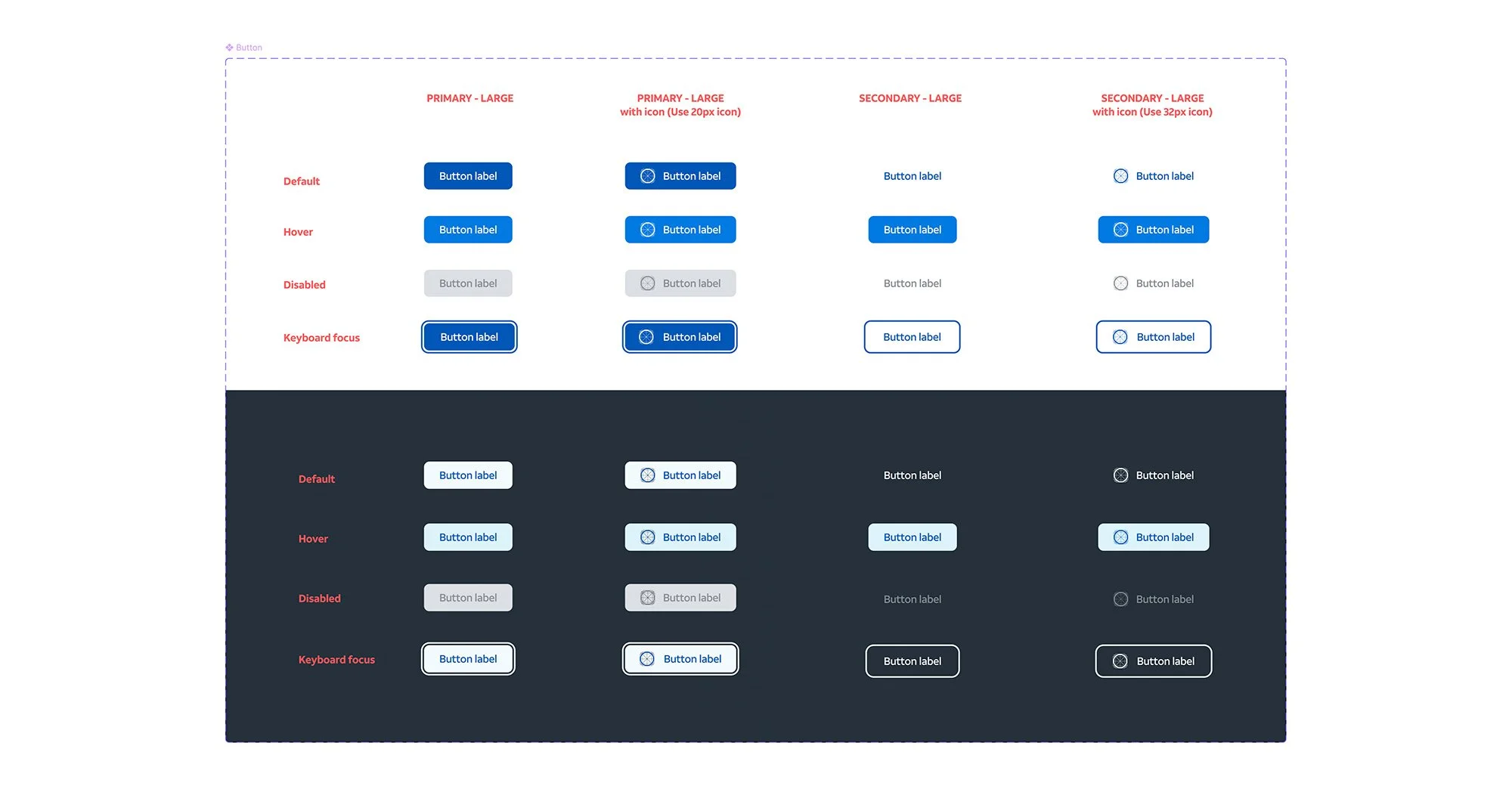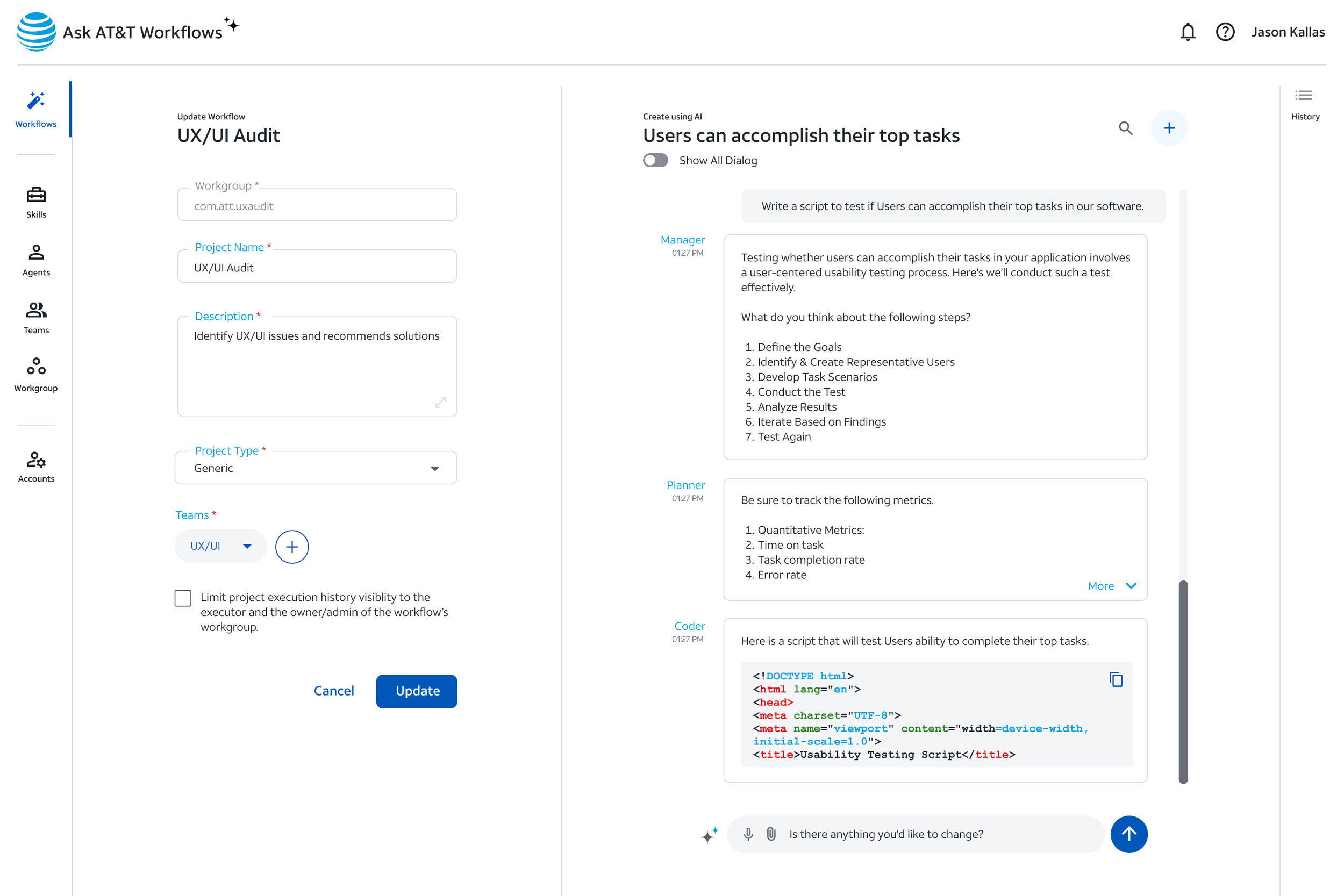Enabling Scalable Innovation: UX for AT&T’s Multi-Agent GenAI Platform
AT&T sought to streamline operations and foster innovation through a multi-agent generative AI platform. As UX Lead, I spearheaded the end-to-end design to make this complex system intuitive, inclusive, and scalable. By tackling key challenges in accessibility, discoverability, and workflow efficiency, my work helped reduce technical barriers, improve user engagement, and deliver a more cohesive enterprise experience.
Problem
Single-agent AI systems were too limited to address AT&T's complex, enterprise-wide challenges. Teams needed to automate workflows, enhance support, and accelerate development. However, early platform versions required deep technical knowledge, causing accessibility and adoption issues. Additionally, there were inefficiencies in modifying skills during project execution and limited component reuse, which slowed development cycles.
Solution
We designed a modular, scalable multi-agent platform with distinct, teachable AI agents orchestrated by a Group Manager. Each agent was specialized (e.g., coding, testing, support) and operated within a microservice architecture.
Key UX features included:
A shared library of reusable skills, agents, and teams
A robust search and permissions system for discoverability and collaboration
Pre-built starter kits to lower entry barriers for non-technical users
A split-screen execution interface for real-time skill editing
Drill-down chip-based navigation for intuitive hierarchy traversal
My Role
As UX Lead, I owned the end-to-end UX strategy from concept to launch. I collaborated with Product, Engineering, and Leadership to:
Lead user research and contextual inquiries
Create and test wireframes, flows, and interactive prototypes
Develop a comprehensive design system
Facilitate cross-functional alignment through workshops and agile ceremonies
Establish UX metrics to track adoption, satisfaction, and engagement
Key Responsibilities
User Research & Advocacy
Conducted research to identify user needs and pain points
Facilitated design thinking sessions to inform direction and prioritization
Wireframes & Prototypes
Built high-fidelity interactive prototypes using Figma
Supported quick iteration and stakeholder feedback loops
Content & Service Design
Mapped service blueprints
Wrote UI copy, instructions, and error messaging
Agile UX Leadership
Participated in PI planning, stand-ups, and backlog grooming
Delivered incremental design solutions aligned with sprint goals
Design System Creation
Leveraging other Figma design systems, I built and maintained a centralized component library for consistency
Accessibility & QA
Ran accessibility audits, QA reviews, and usability testing
Drove continuous UX improvements post-launch
CHALLENGE #1
Lowering the Barrier to Entry
Problem: Early users had to code skills from scratch using Python, limiting accessibility and delaying adoption.
Solution: Introduced a shared library and starter kits with ready-to-use agents and skills. Users could search, request access, and build on existing components.
Outcome: Reduced learning curve and setup time. Empowered non-technical users and promoted system-wide collaboration.
CHALLENGE #2
Improving Iteration During Execution
Problem: Users had to leave the execution screen to edit skills or agents, disrupting flow and reducing iterative refinements.
Solution: Designed a split-screen layout for simultaneous execution and editing, plus a drill-down navigation to simplify structure and access.
Outcome: Streamlined workflows and reduced cognitive burden. Enabled users to refine outputs in real time.
Impact & Outcomes
The impact was observed qualitatively through improved usability testing feedback, increased adoption in demos, and broader engagement across technical and non-technical teams.
Improved satisfaction and engagement through inclusive design
Faster onboarding and project setup with starter kits
Enhanced usability and performance via real-time editing tools
Final Reflection
This case highlights how UX can transform advanced AI systems into usable, scalable enterprise tools. By embedding myself across research, strategy, design, and execution, I helped AT&T build a future-ready platform that prioritizes users as much as innovation.



